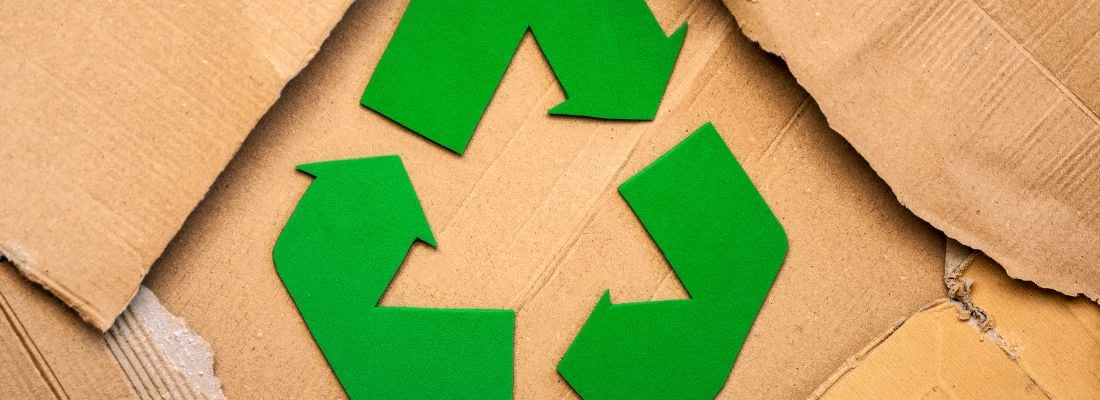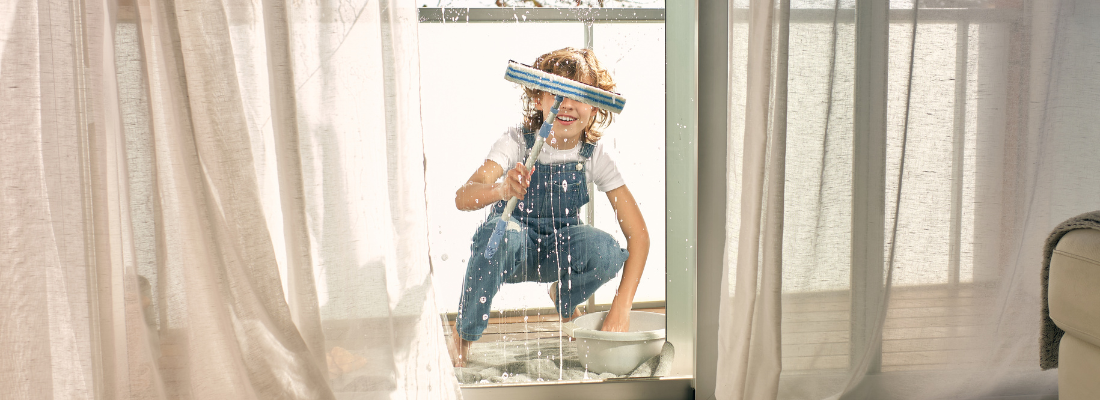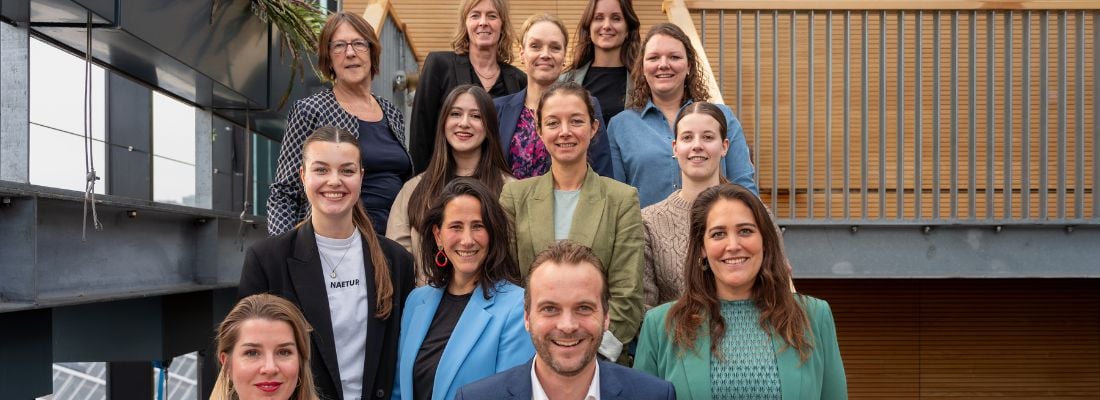Exploring the importance of sustainable packaging in cleaning
Sustainability is a hot topic these days. From saving precious natural resources such as water, to reducing our carbon footprint and using biodegradable cleaning products – the cleaning and hygiene sector is having to rethink its impact on the planet. One of the most exciting recent advances is in the field of sustainable packaging.
We recently caught up with Lisa Sligting, a planet-loving packaging pro. Lisa is the Sustainability Manager for NVZ, the industry association for manufacturers of detergents, disinfectants, and maintenance products in the Netherlands. She shared some very interesting insights about the trends, challenges, and future of sustainable packaging in the cleaning and hygiene sector.
How would you define sustainability?
To determine sustainability, we examine the 17 sustainable development goals of the United Nations. The Sustainable Development Goals, also known as the SDGs, were adopted by the United Nations in 2015 as a universal call to action “to end poverty, protect the planet, and ensure that by 2030 all people enjoy peace and prosperity”.
The 17 SDGs are integrated—they recognize that action in one area will affect outcomes in others, and that development must balance environmental, social, and economic sustainability. “These goals demonstrate that sustainability includes a wide variety of topics such as the more obvious objectives of climate neutrality, the impact on our aquatic environment and also social objectives such as gender equality, good health and wellbeing,” explains Lisa.
What is important is to always maintain a holistic view of sustainability. “For example, if we talk about resource efficiency in the context of cleaning products you must also take into account not only the resource efficiency of the products, but also that detergents and maintenance products can help to extend the lifetime of products (for example clothes) and structures such as buildings – thus reducing waste,” she comments. Cleaning products and disinfectants also play a crucial role in healthcare and infection prevention. Cleaning products can fulfil many roles that are vital for a sustainable society.
What defines sustainable packaging?
Sustainable packaging is environmentally minded packaging that is designed to minimise the environmental footprint. This can be achieved through the creation of reusable packaging, the use of 100% recycled materials, and choosing production processes that reduce a manufacturer’s carbon footprint. Sustainable packaging in cleaning should be recyclable, safe for people and the environment, and lessen our environmental impact.
The end goal is to ensure that the life cycle of the packaging won’t pose a threat to the environment.
Why is sustainable packaging important?
Sustainable packaging design has become increasingly important in recent years as consumers become more focused on the environment. If we look at sustainability, the European cleaning product and detergent industry supports the objectives set out in the European Green Deal. One of their objectives is a resource efficient circular economy. Packaging plays an important role in this and already we see many efforts made by the detergent sector to help increase the sustainability of packaging. Two examples are an increase in the recyclability of packaging as well as an increase in the use of recycled material in packaging.
Brands are switching to sustainable packaging for many reasons, including corporate social responsibility, reducing their carbon footprints, reducing waste, and increasing sales to meet growing consumer demand for environmentally and socially ethical packaging.
Brands are switching to sustainable packaging for many reasons, including corporate social responsibility, reducing their carbon footprints, reducing waste, and increasing sales to meet growing consumer demand for environmentally and socially ethical packaging.
What are the 3 main challenges that the cleaning industry is facing right now with regards to sustainability?
It’s one thing wanting to move towards more sustainable, circular packaging, but it’s quite another thing to implement these changes. “We sometimes see companies struggling with the question what is the best option for sustainable packaging? Is it recycling? Is it reusable packaging? Is it both? Is it plastic or other types of packaging material? And this differs from situation to situation. You can only determine what is the best option by looking at the specific situation. It’s also important to do some form of lifecycle analysis for the different options so that you can compare,” suggests Lisa.
Another challenge is in the “use” phase of our products, because in terms of environmental impact, there's much to gain in this phase. The amount of water and the temperature of water when you use cleaning products are important, since these are energy intensive factors that could significantly reduce the negative environmental impact.
“It’s also important to avoid overdosing of products, which, unfortunately sometimes is still the case with cleaning products. Luckily, we see that more and more suppliers of cleaning products are taking their responsibility seriously and communicating about the sustainable use of their products,” Lisa continues.
How do you keep up with the changes in sustainable packaging regulation and legislation?
Another challenge in the last couple of years is the development in legislation. “Under the European Green deal that was published in 2019 there are so many legislative initiatives and proposals affecting our sector that it's becoming increasingly difficult to keep up with all the upcoming obligations, especially for SMEs. This is definitely something to keep an eye on for us as an industry association,” she says.
Lisa’s advice would be to join an industry association such as the NVZ. “That way you can learn from your peers and experts. This helps you to keep up to date with the latest developments and prerequisites in legislation involved in for example sustainable packaging in cleaning, which is becoming increasingly important because there is so much happening,” she explains.
She also recommends joining a relevant holistic eco label because usually these eco labels are also ahead of the game in terms of legislative developments. It’s important to look for eco labels that cover all stages and aspects of the lifecycle of a cleaning product and also take the effectiveness into account. “Two examples of eco labels that have a very holistic approach are the Charter for Sustainable Cleaning and the EU eco label,” mentions Lisa.
What is packaging designed for circular sustainable packaging?
Circular packaging is packaging that does not involve resource depletion. So, for instance you avoid the use of virgin materials and only make use of recycled or reused materials. There are two options to achieve a circular packaging chain. The first involves the reuse of packaging. However, sometimes this is not a good option because of hygiene or safety issues.
Another option is closed loop recycling of packaging. This means that you recycle the packaging in such a way that the recycled material that is obtained is of sufficient quality to be used in packaging again. In some cases, closed loop recycling might be a better, more sustainable option than reuse. However, to gain maximum sustainability in packaging both options should be considered in a circular packaging supply chain.
What are secondary and tertiary packaging examples?
Secondary packaging refers to the boxes and containers containing the specific primary packaging. This type of packaging has indirect contact with the products, while tertiary packaging includes the pallets and other larger transport packaging such as large shipping containers for example.
“It might be easier to see how you can increase the sustainability of your secondary and tertiary packaging because these types of packaging are not in direct contact with the product, so there are fewer hygiene and safety challenges. It may also be easier to reduce the amount of packaging material and look at the options of reuse,” suggests Lisa.
What are the trends in sustainable packaging?
NVZ and its members completed a pilot programme last year about closed loop recycling of packaging in the professional cleaning sector. Together with partners they are now trying to develop that into a larger skillset, to see if they can set up a working closed loop system for plastic packaging in the professional cleaning sector. “So, I would say that's something to keep an eye on,” comments Lisa.
Something else that needs mentioning is the growing awareness of greenwashing in our society. Greenwashing is the practice of making misleading green claims. It’s becoming increasingly important to ensure that you can really substantiate these green claims as a company. This extends to any messaging about sustainable packaging in cleaning.
One of the ways companies can avoid greenwashing is to rely on the authenticity of eco labels, however in some cases these aren’t suitable. For example, for disinfectants and biocides, you don't have any options for eco labels, but I think eco labels can play an important role in this because they are externally verified. “For someone who's buying cleaning products and might not have the time or the knowledge to see if a green claim can be scientifically substantiated, it would be helpful to look for eco labels because then the job is already done by the external verifier,” explains Lisa.
If a company doesn’t know where to start with sustainable packaging would you have any advice? What is the first step towards sustainable packaging?
“Things are going to move faster and faster in terms of sustainability and the related legislation, which is a good thing of course, but it's also challenging. I think it's important to unite as an industry sector. I would highly recommend joining the Charter for Sustainable Cleaning. This charter provides a lifecycle analysis-based framework, and therefore it guarantees a holistic approach in sustainability. It promotes and facilitates a common industry approach to sustainability practises. It is also ahead of the legislative developments. So, therefore it helps companies stay up to date and compliant.”
Lisa adds the following advice: “It’s a good idea to study the benchmark industry initiatives that are already in place. You need to really focus on the end goal – the ambition to indeed create a circular packaging chain. In order to do so, it would at least be important to try to make use of recycled content within your packaging and to ensure that your packaging is recyclable.”
For more information on sustainable packaging in cleaning be sure to follow developments on our website, www.intercleanshow.com. Here you’ll find the most up to date advances in sustainability in professional cleaning. Also check out this article we previously published on sustainable packaging in cleaning to find out what companies can do to reduce waste.
Share your stories with us!
Do you have an innovation or interesting news you would like to share with the professional cleaning and hygiene industry? The Interclean website and social media channels are a great platform to showcase your stories!
Please contact our press department interclean@rai.nl.
Are you an Interclean exhibitor?
Make sure you add your latest press releases to your Company Profile in the Exhibitor Portal for free exposure.
Receive the best newsletter on cleaning & hygiene - straight to your inbox!
We promise never to send you spam and you can unsubscribe at any time!





